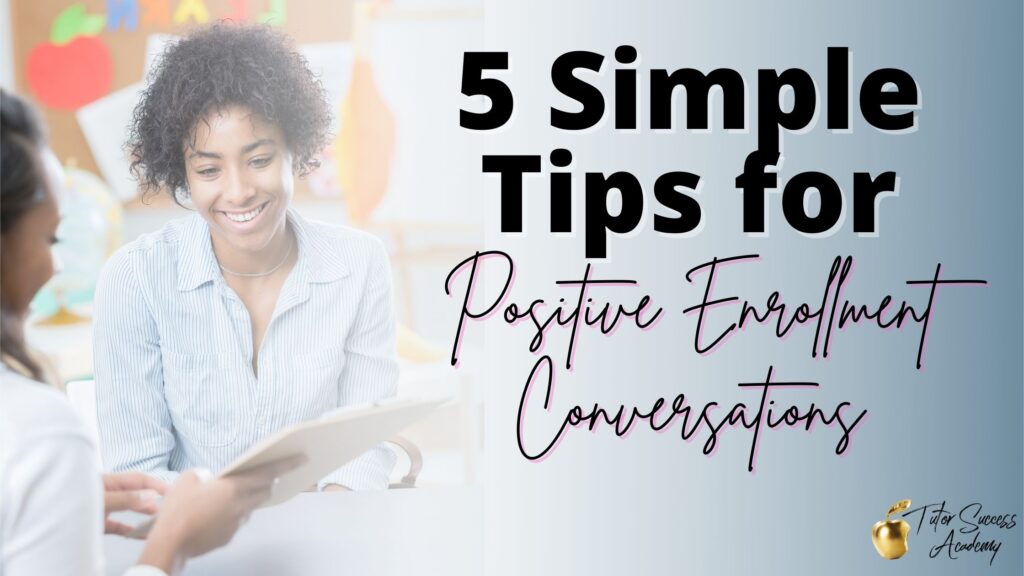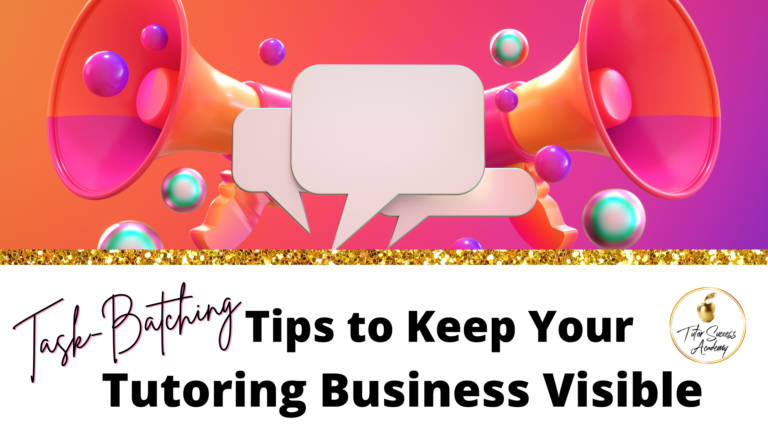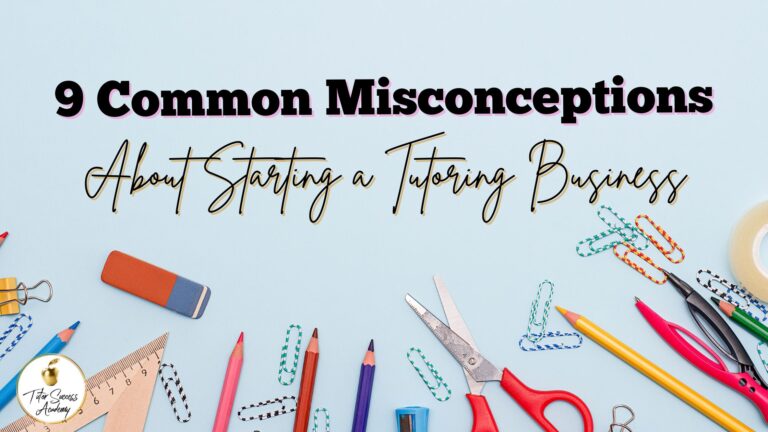5 Simple Tips for Positive Enrollment Conversations

Enrollment conversations can be a wonderful experience for you and the family seeking your help, and you can both walk away feeling great about the new relationship you’ve started. The key to a positive enrollment conversation is making genuine connections and building relationships.
Your Goal for Enrollment Conversations
You might think the primary goal of enrollment conversations is to sign up a new student and add them to your roster. That is not the case. Your primary goal for enrollment conversations is to help families gain the information and insight they need to make the best decision for their families.
The goal of your enrollment conversation is to bring clarity and address questions like:
- Is this the best next step for the child?
- Am I the right person to help this child?
Your goal is to work with the family. This conversation can be the first step in a long-lasting relationship.
Here are 5 Tips to Help You Have Positive and Successful Enrollment Conversations
1. Prepare ahead of time.
If you are nervous about having an enrollment conversation, the best advice we can offer is to be prepared!
Prior to the conversation, you will want to send a parent consultation form to gather some initial data and information. Be sure to review the answers before the initial conversation so that you have an idea of who you’re speaking with and what their concerns are.
Another great way to prepare for this conversation is with a planning sheet. Your planning sheet might have questions you know you need to ask, conversation prompts, and answers to common, or frequently asked questions.
Finally, in order to prepare for the conversation, have a clear path of how the conversation will flow. I like to start by asking about their pain points (which I’ll already have an idea of from their form), then move on to how you can help the child, and finally get into a plan for moving forward and the next steps.
2. Listen actively.
Listening is truly an art. Sometimes, when we get into these conversations, especially if we are nervous, we can forget how important it is to listen. To be an active listener, acknowledge what the family is saying and ensure that you are understanding them clearly.
Additionally, it is equally important to ask for clarification when you are not understanding clearly. This conversation is your chance to gain information and understanding.
3. Take notes.
Be prepared to take notes during your conversation. Have paper and pen handy or a document open on your screen to type in. You may even use your planning sheet.
Now, for some of us, taking notes while actively listening can be tricky. You can always ask to record the conversation and use the recording to take detailed notes at a later time and review the information gathered in the meeting to help create your plan for moving forward.
4. Think of selling as service.
Now, enrollment conversations can easily make us feel nervous. There is going to be a component of the conversation centered around sales and prices. But, selling does NOT have to feel scammy. Selling can be service.
Having an enrollment conversation is ultimately a sales conversation and sales can be tricky and uncomfortable. We get that. As educators, we don’t have a ton of experience in sales.
When these conversations feel hard, ask yourself this: If this child signs up with me, will they be in a better place? Will they have access to resources, knowledge, and support that they wouldn’t otherwise?
So, even though the conversation will cover an exchange of money, really, it is an investment in service.
If you’re looking for more advice around conversations about rates, read 3 TIPS TO RAISE YOUR RATES WITH CONFIDENCE!
5. Plan for follow-up.
What a relief, you go through the enrollment conversation. Now what? You need a follow-up plan.
A follow-up plan is important because not everyone you meet with will sign up on the spot. It is okay if they need time, tutoring is quite the investment for most families.
There are a few different approaches you can take for followup:
- A formal follow-up with a request for a decision
- An informal check-in at a specific time down the road
- A down-the-road check-in
You can decide how and when to follow up based on the information shared in the enrollment conversation.
Ready to continue this conversation? Learn how to help parents gain clarity, tips for selling, planning responses to objections, and craft your follow-up plan.
Check out our Enrollment Conversations Masterclass in the Members Academy!
Try It For FREE For 14-Days
The Member’s Academy Is Your Business “Go To” Resource Vault And Year-Round Community To Support Your Business Goals, Both Big And Small.







